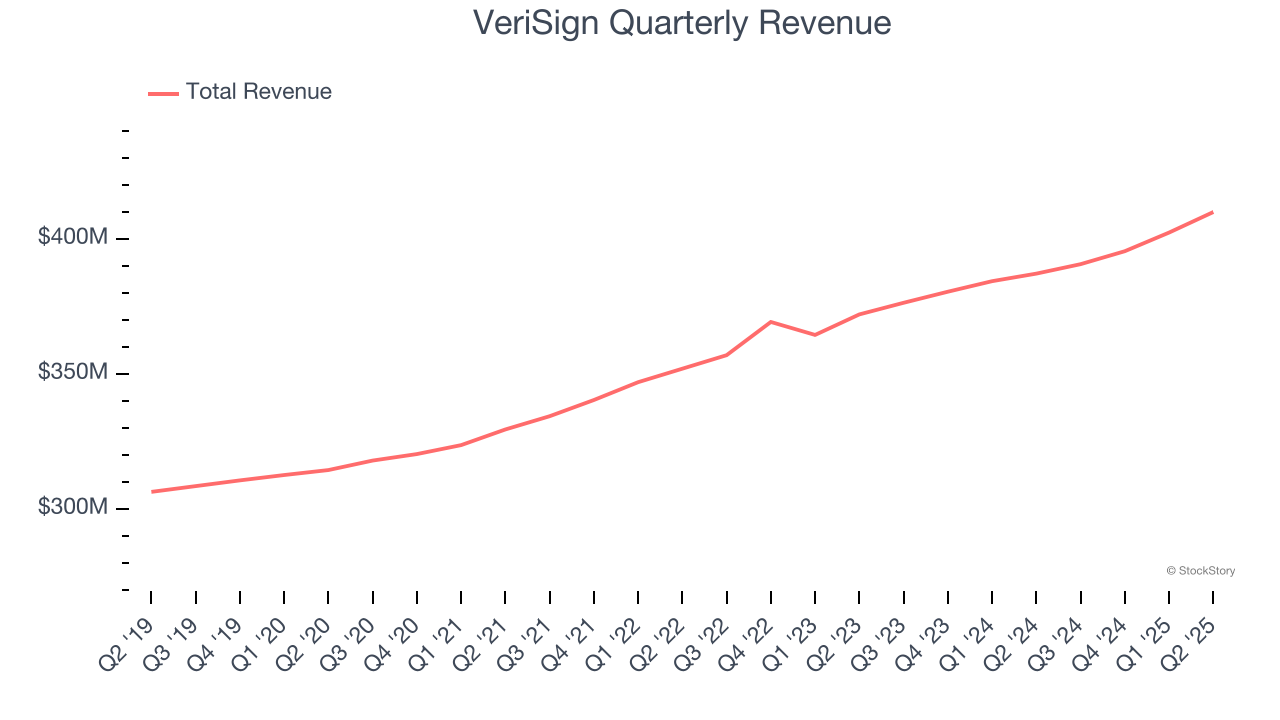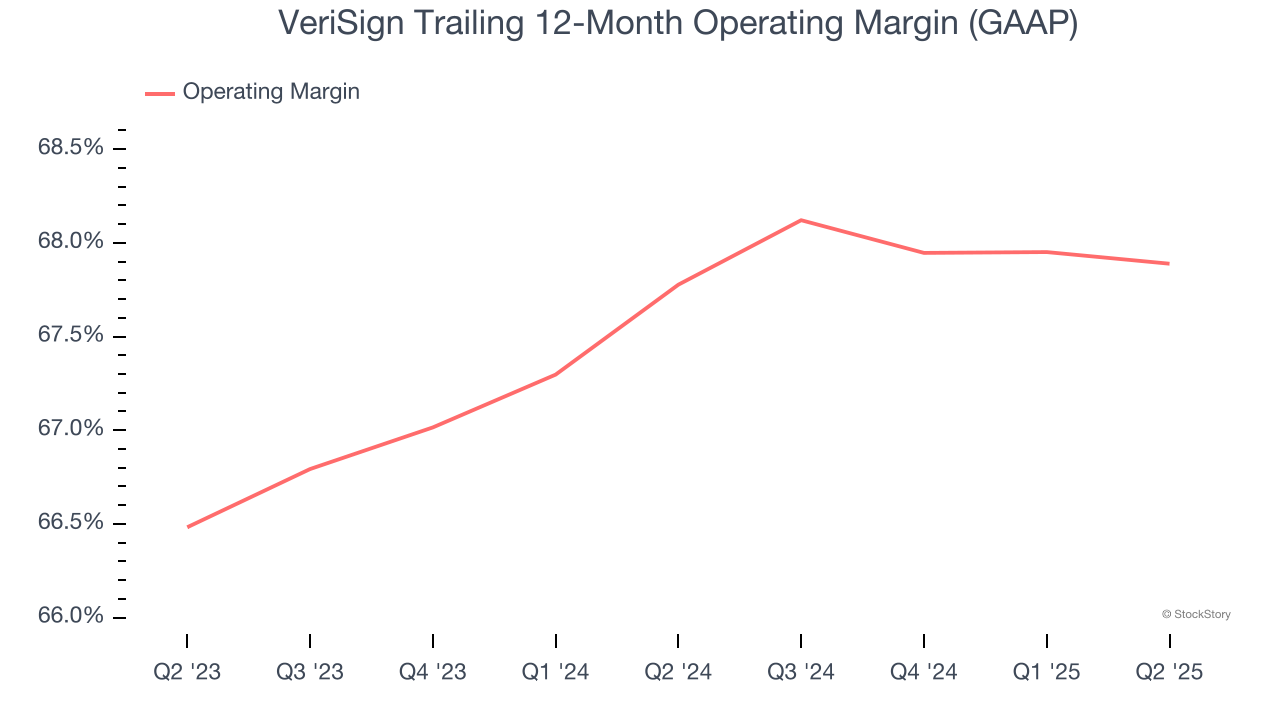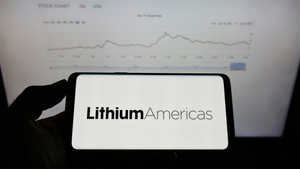
While the S&P 500 is up 34.7% since April 2025, VeriSign (currently trading at $268.50 per share) has lagged behind, posting a return of 14%. This was partly due to its softer quarterly results and may have investors wondering how to approach the situation.
Is now the time to buy VeriSign, or should you be careful about including it in your portfolio? Get the full breakdown from our expert analysts, it’s free for active Edge members.
Why Is VeriSign Not Exciting?
We're sitting this one out for now. Here are three reasons there are better opportunities than VRSN and a stock we'd rather own.
1. Long-Term Revenue Growth Disappoints
Reviewing a company’s long-term sales performance reveals insights into its quality. Any business can put up a good quarter or two, but many enduring ones grow for years. Over the last five years, VeriSign grew its sales at a weak 5.1% compounded annual growth rate. This fell short of our benchmark for the software sector.

2. Projected Revenue Growth Is Slim
Forecasted revenues by Wall Street analysts signal a company’s potential. Predictions may not always be accurate, but accelerating growth typically boosts valuation multiples and stock prices while slowing growth does the opposite.
Over the next 12 months, sell-side analysts expect VeriSign’s revenue to rise by 5.2%, close to its 5.1% annualized growth for the past five years. This projection doesn't excite us and suggests its newer products and services will not accelerate its top-line performance yet.
3. Operating Margin in Limbo
Many software businesses adjust their profits for stock-based compensation (SBC), but we prioritize GAAP operating margin because SBC is a real expense used to attract and retain engineering and sales talent. This metric shows how much revenue remains after accounting for all core expenses – everything from the cost of goods sold to sales and R&D.
Looking at the trend in its profitability, VeriSign’s operating margin might fluctuated slightly but has generally stayed the same over the last two years. This raises questions about the company’s expense base because its revenue growth should have given it leverage on its fixed costs, resulting in better economies of scale and profitability. Its operating margin for the trailing 12 months was 67.9%.

Final Judgment
VeriSign’s business quality ultimately falls short of our standards. With its shares lagging the market recently, the stock trades at 15.1× forward price-to-sales (or $268.50 per share). This valuation tells us a lot of optimism is priced in - we think other companies feature superior fundamentals at the moment. Let us point you toward the Amazon and PayPal of Latin America.
Stocks We Would Buy Instead of VeriSign
When Trump unveiled his aggressive tariff plan in April 2025, markets tanked as investors feared a full-blown trade war. But those who panicked and sold missed the subsequent rebound that’s already erased most losses.
Don’t let fear keep you from great opportunities and take a look at Top 5 Growth Stocks for this month. This is a curated list of our High Quality stocks that have generated a market-beating return of 183% over the last five years (as of March 31st 2025).
Stocks that made our list in 2020 include now familiar names such as Nvidia (+1,545% between March 2020 and March 2025) as well as under-the-radar businesses like the once-micro-cap company Tecnoglass (+1,754% five-year return). Find your next big winner with StockStory today.
StockStory is growing and hiring equity analyst and marketing roles. Are you a 0 to 1 builder passionate about the markets and AI? See the open roles here.






